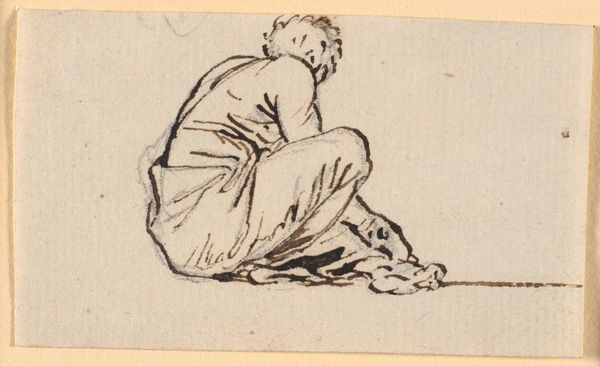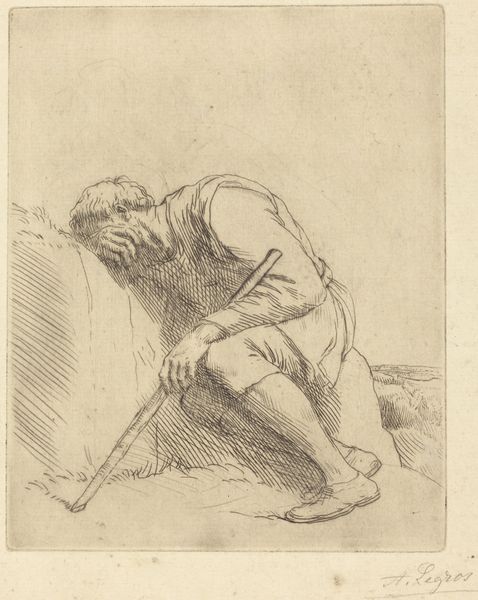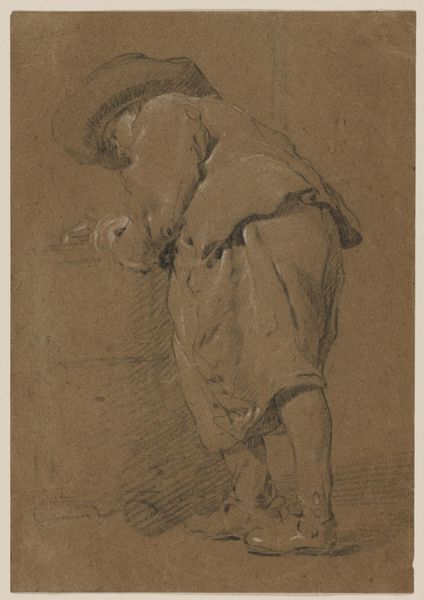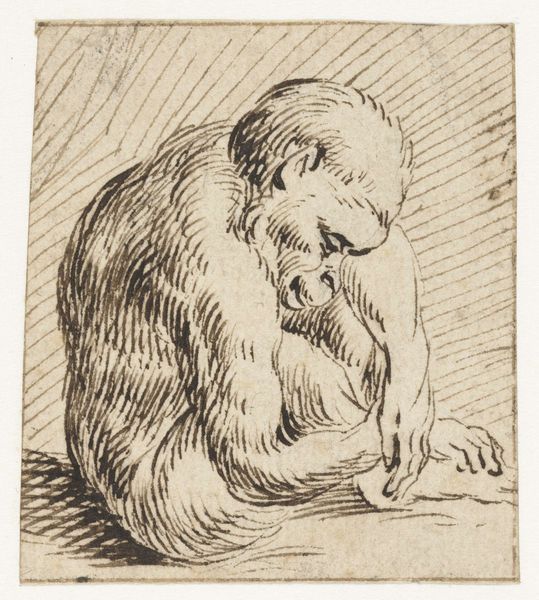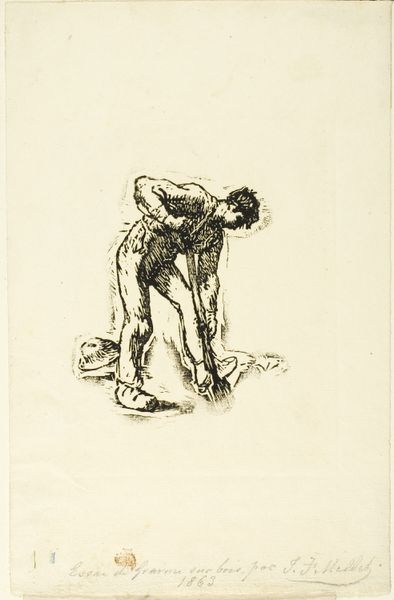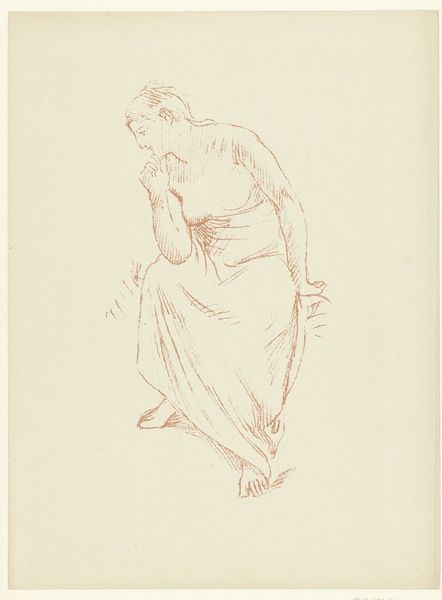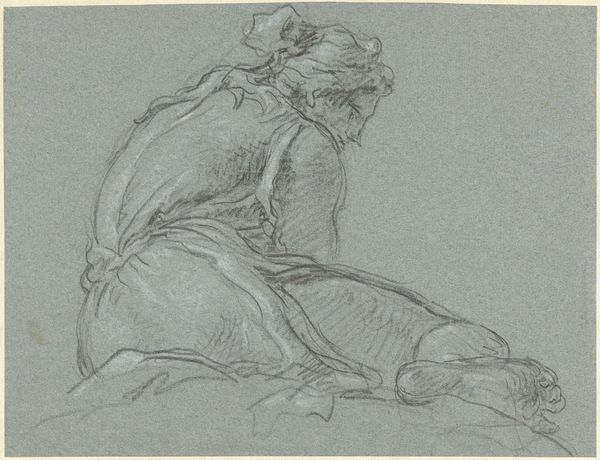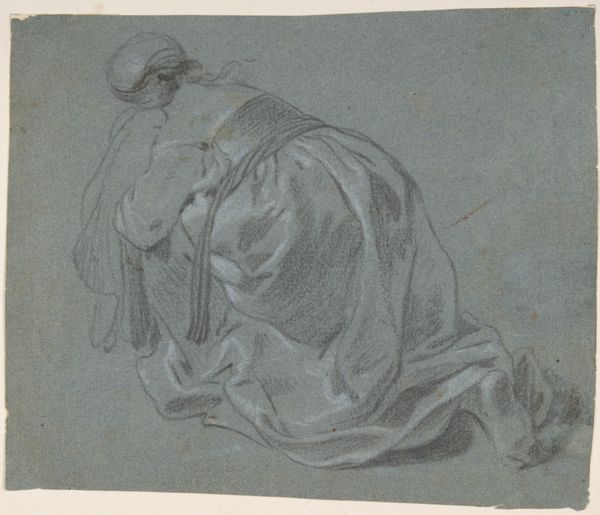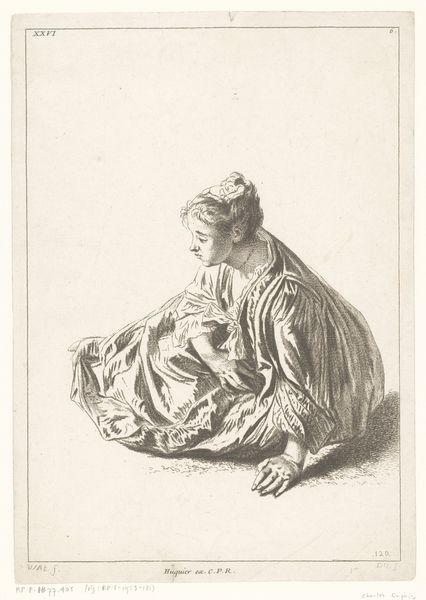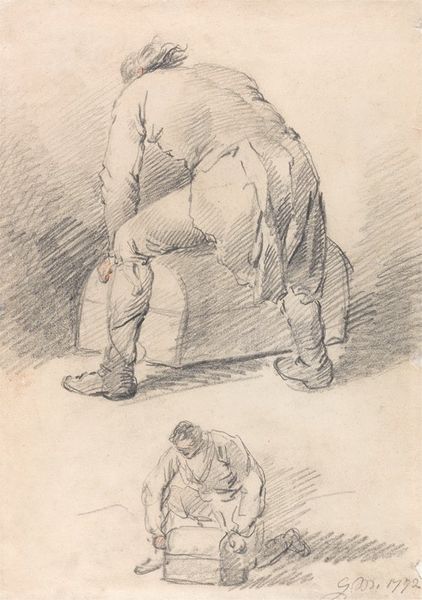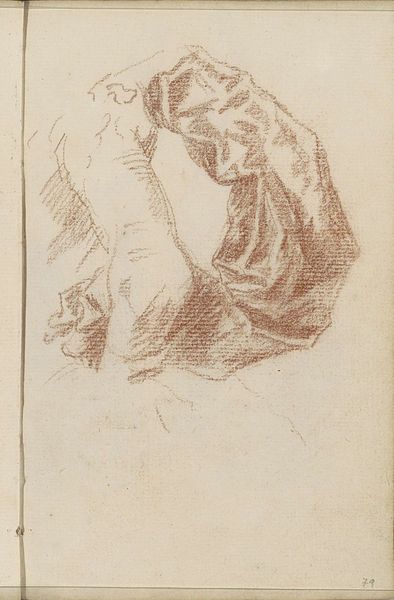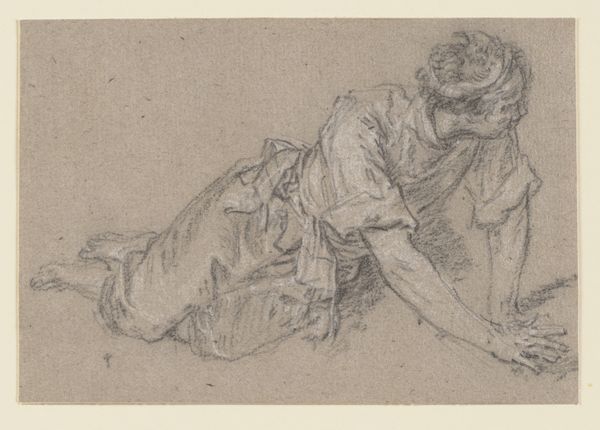
I forgrunden en siddende sammenbøjet kvindefigur, bag et brystværn læner en anden sig frem mod hende 1743 - 1809
0:00
0:00
Dimensions: 114 mm (height) x 94 mm (width) (bladmaal)
Curator: This emotionally charged scene is by Nicolai Abildgaard, titled “In the foreground a seated, slumped female figure, behind a parapet, another leans forward towards her." It's thought to have been made between 1743 and 1809. It's an ink and pencil drawing on paper, currently residing here at the SMK. What is your first take? Editor: There's an immediate sense of sorrow here. The slumped figure communicates vulnerability. I want to know her story. Is she grieving? Is she ill? Curator: Given the era and Abildgaard's interest in Neoclassicism and the burgeoning Romantic movement, it’s tempting to connect it with grand narratives of personal struggle against larger forces, looking into female representation and oppression. The posture itself tells a story of constraint. Editor: Absolutely. Look how the supporting figure leans in. It's such an intimate moment, almost conspiratorial. Is she offering support, perhaps warning? We see here what it can mean for one woman to simply, physically, offer support to another in these difficult and uncertain times. Curator: The drawing's sketchy quality lends itself to such interpretations. The unfinished feel, the implied narrative, allows viewers to project their own understanding of female solidarity or a personal conflict. We may not have names, specific setting details or more conventional contextual details here, but through abstraction, we perhaps find more access points for more intersectional and personal meanings to arise. Editor: It raises such urgent and critical questions. Why is one figure trapped while the other has this ambiguous and difficult vantage point. It’s precisely in this incompleteness that we encounter so many possibilities. Abildgaard's piece reflects how gender, status and power might work here. Curator: Considering Abildgaard's context, this piece opens up intriguing angles onto how artistic circles interacted with, and portrayed, themes of revolutionary change and how it can land at an intensely intimate personal level. It is this capacity for art to act as mirror as much as anything else, reflecting personal realities from these monumental epochs, is perhaps where we meet with this work in all its honesty and grace. Editor: A powerful glimpse into the interior lives of women and, more broadly, a poignant reflection on connection and resistance. I really was drawn in there. Thank you for the context!
Comments
No comments
Be the first to comment and join the conversation on the ultimate creative platform.
